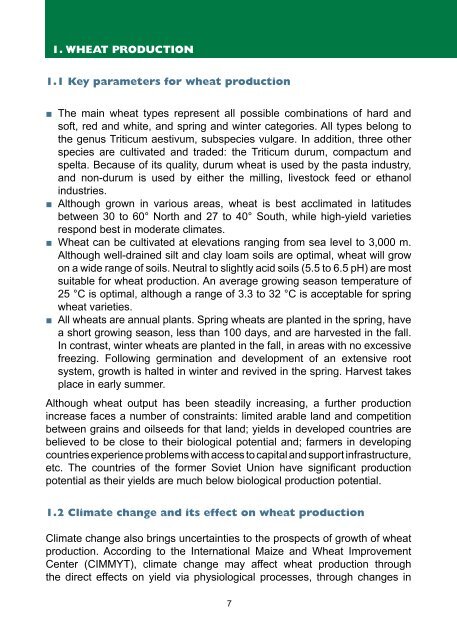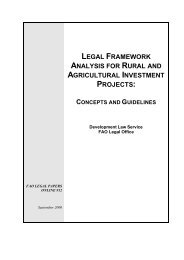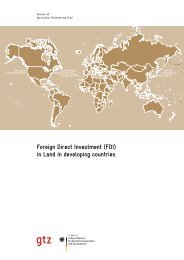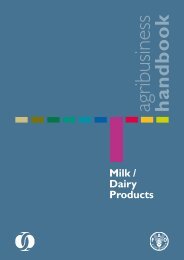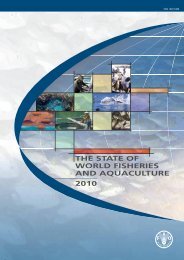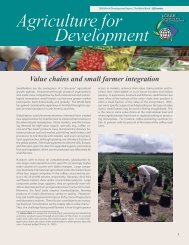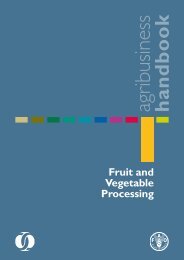Wheat Flour
Wheat Flour
Wheat Flour
You also want an ePaper? Increase the reach of your titles
YUMPU automatically turns print PDFs into web optimized ePapers that Google loves.
1. WHEAT PRODUCTION<br />
1.1 Key parameters for wheat production<br />
■ The main wheat types represent all possible combinations of hard and<br />
soft, red and white, and spring and winter categories. All types belong to<br />
the genus Triticum aestivum, subspecies vulgare. In addition, three other<br />
species are cultivated and traded: the Triticum durum, compactum and<br />
spelta. Because of its quality, durum wheat is used by the pasta industry,<br />
and non-durum is used by either the milling, livestock feed or ethanol<br />
industries.<br />
■ Although grown in various areas, wheat is best acclimated in latitudes<br />
between 30 to 60° North and 27 to 40° South, while high-yield varieties<br />
respond best in moderate climates.<br />
■ <strong>Wheat</strong> can be cultivated at elevations ranging from sea level to 3,000 m.<br />
Although well-drained silt and clay loam soils are optimal, wheat will grow<br />
on a wide range of soils. Neutral to slightly acid soils (5.5 to 6.5 pH) are most<br />
suitable for wheat production. An average growing season temperature of<br />
25 °C is optimal, although a range of 3.3 to 32 °C is acceptable for spring<br />
wheat varieties.<br />
■ All wheats are annual plants. Spring wheats are planted in the spring, have<br />
a short growing season, less than 100 days, and are harvested in the fall.<br />
In contrast, winter wheats are planted in the fall, in areas with no excessive<br />
freezing. Following germination and development of an extensive root<br />
system, growth is halted in winter and revived in the spring. Harvest takes<br />
place in early summer.<br />
Although wheat output has been steadily increasing, a further production<br />
increase faces a number of constraints: limited arable land and competition<br />
between grains and oilseeds for that land; yields in developed countries are<br />
believed to be close to their biological potential and; farmers in developing<br />
countries experience problems with access to capital and support infrastructure,<br />
etc. The countries of the former Soviet Union have significant production<br />
potential as their yields are much below biological production potential.<br />
1.2 Climate change and its effect on wheat production<br />
Climate change also brings uncertainties to the prospects of growth of wheat<br />
production. According to the International Maize and <strong>Wheat</strong> Improvement<br />
Center (CIMMYT), climate change may affect wheat production through<br />
the direct effects on yield via physiological processes, through changes in<br />
7


